|
Health Watch
April: high-risk month:
Protect yourself and your loved ones from dengue
Nadira Gunatilleke
The Epidemiology Unit of the Health Ministry has declared April as
the high risk month for the dengue epidemic. During the past years, the
highest number of dengue patients and deaths were reported in April.
Health authorities will take strict legal action against dengue mosquito
breeders.
|
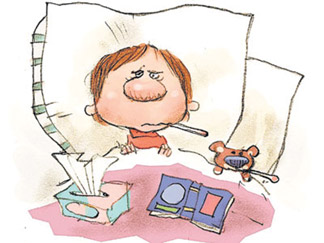
Stay home and
get plenty of rest |
The health authorities will re-inspect the 61,780 possible dengue
mosquito breeding places identified countrywide during the recent
National Dengue Control Week and will take strict legal action against
those who violate the rules and regulations. Destroying mosquito
breeding sites located within your properties is a must.
The Epidemiology Unit has issued red alerts to 18 MOH areas in 10
districts which are in high risk category. They are Colombo MC, Biyagama,
Minuwangoda, Wattala, Godakawela, Kurunegala, Ridigama, Horana, Panadura,
Tissamaharama, Vavuniya, Batticaloa, Chenkaladi, Welwali, Oddamawadi,
Koralepattu Uppuweli, and Mawanella. Take good care of you and your
children.
If you live in one of those areas, it is better to be on high alert
and clean up your home, garden and the environment around your home.
Dengue mosquitoes do not fly kilometres or miles.
They just fly a distance of only 500 meters to bite you. Therefore,
there is no need to worry about the gutter located in the town five
kilometres away from your home.
Worry about the ice cream cup lying on the road side just a few years
away from your home and the bromelia tree in your own garden.
According to the latest findings, dengue mosquitoes can bite you at
any time of the day and they can breed in any type of water. Dengue
larvae can survive for two years without water.
You can get dengue when a normal mosquito that has previously bitten
a dengue patient bites you.
|
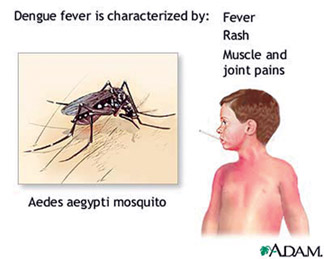
Symptoms |
So it is evident that dengue can spread among family members and
neighbours if there is a dengue patient residing at a places where there
are mosquitoes.
Therefore dengue patients should always use mosquito nets during day
time to prevent others in the family from getting infected. Also there
are many other small facts that should be taken into consideration.
Even to date there are parents who let their children play, attend
school and even tuition classes when they have fever.
It seems that still many people have not understood the importance of
following doctors' advice and stay away from work when they are sick.
|
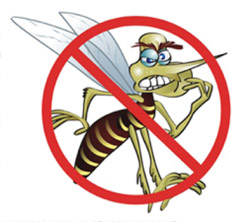
Ban dengue |
Last year the Ministry changed the entire treatment system available
for dengue patients. The ministry trained physicians attached to main
State hospitals with WHO assistance. Under the new treatment system,
normal blood is given to dengue patients instead of platelet.
Earlier platelet was given to dengue patients when there was
a drop in the platelet count. The new treatment system has already
cut down the death rate.
Under this new system, dengue patients in the high
risk category like pregnant mothers, infants, elderly and persons who
suffer from chronic diseases should seek medical treatment within six
hours to avoid complications.
It is up to you to protect yourself and your loved ones from this
deadly disease.
Better not wait till it is too late to take precautions. Take action
now itself!
Multi-talented surgeon
Surgeon Nagalingam Ramachandran is a man of wide and varied talents
and interests. He was born in his ancestral home built by his
grandfather who was a well respected farmer in the little village of
Nunavil West, 10 miles from Jaffna along the Jaffna Kandy main road. It
was the first stone built house in the village. However, since it was
situated on the main road it was destroyed during the 1983 disturbances.
His father, a teacher had to get down a special astrologer no sooner
his son was born on April 28, 1934. The astrologer was accommodated at
home to cast the baby's horoscope. It was a belief that a son born on a
full moon day in April was not good for the family, although the baby
himself would be clever and talented in many ways. The astrologer
predicted that the boy will one day be a surgeon and brave enough to
even operate on his kith and kin.
|
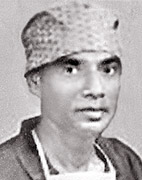
Nagalingam
Ramachandran |
Early education
He was one among the 10-15 students selected to study for the
University entrance examination from Jaffna Hindu College. He was
successful in his first attempt to enter the University of Colombo
Medical Faculty (one of 60 students from the entire country with a
fifteen million population).
Professional achievements
After his MBBS, he passed the primary FRCS examination held in
Colombo after he had started training in Obstetrics and Gynaecology as a
Registrar to the Professor in Colombo. His earlier intention was to
specialise in Obstetrics and Gynaecology but there was a delay in
sending him on post graduate examination to UK. He completed the
requisite training in this specialty and sat the final part in MRCOG and
started training in General Surgery and was sent on scholarship for the
post graduate studies and final examination.
He was sent on a scholarship to UK. He sat both examinations and was
successful in the final FRCS and the MRCOG examination within one year.
His professional achievement was due to him having worked as a House
Officer under Prof Milroy Paul (FRCS, MRCP) professor of Surgery at the
University of Colombo and also Registrar to the Ceylon Medical Council.
For his training in Obstetrics and Gynaecology he was Registrar to Prof
A Sinnathamby (FRCS, FRCOG) who was the professor of Obstetrics and
Gynaecology of the University of Colombo and the first professor in
Obstetrics and Gynaecology Peradeniya university.
The added feather in his cap was when he performed a hysterectomy
under local anaesthesia on a woman who was transferred from Anuradhapura
to Kandy in obstructed labour with a dead foetus for four days (the
woman's 14th child).
In Kandy, he practised as a successful surgeon and was keen on
teaching medical students and examiner in Surgery for the final MBBS
(Ceylon).
Many of his students and house officers are now surgeons and
gynaecologists in many parts of the globe. In Kandy, he had established
a successful private practice apart from his government jobs as a
consultant surgeon in the teaching hospital linked to the Peradeniya
University. He had built a house in Kandy on top of a hill overlooking
the city and was hoping to retire in Kandy.
But fate decided otherwise. Following the 1983 disturbances in Sri
Lanka, he went to England where he worked as a locum consultant in
surgery in different parts of the country mainly in Cornwall, Red-hill
and Lincoln. - while based as a resident doctor in a private Bupa
hospital.
Later he worked at the accident emergency having successfully
completed the ATLS examination according to American standards. Even
after retirement he worked as a locum consultant in A&E in hospitals in
England. He was elected Honourary Associate Fellow of the Faculty of
Accident Emergency in UK.
Hobbies and interests
In the university he participated in tennis, table tennis, badminton,
athletics and occasionally football. He played for the university second
tennis team and secured university colours in table tennis. He played
table tennis for the central YMCA Colombo and captained the YMCA Greens
team in the late fifties and took part in several inter-club
tournaments.
He will be celebrating his 50th wedding anniversary on May 12. He has
four children two of whom are in the same profession. He has eight grand
children. He was recently elected a Honorary Retired Fellow of the Royal
Society of Medicine in London.
DHF - top killers
Dengue fever, Dengue haemorrhagic fever (Break bone fever) and Dengue
shock syndrome are prime among the dengue-linked diseases.
|
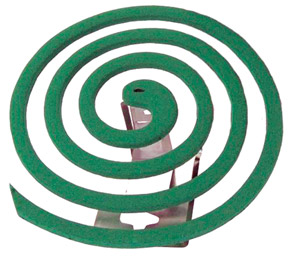
Coils keep mosquitoes away |
Dengue Haemorrhagic Fever is a mosquito-borne viral infection endemic
in the tropical and sub-tropical regions. The female aegypti (most
important vector) mosquito is semi-domesticated, preferring to lay its
eggs in man-made water containers, resting indoors and feeding in the
early morning or late afternoon. There are four serotypes of Dengue
virus. Dengue usually occurs as epidemics in Sri Lanka following the
monsoon seasons.
According to data from epidemiology unit of Sri Lanka, the number of
total cases recorded for year 2010 is over 35,000. The most affected
district was Kandy. Colombo, Gampaha and Kalutara districts which have
been susceptible in the past have also recorded a high rate of infection
and deaths.
* Causative agents: Dengue virus - there are four serotypes of the
single-stranded RNA virus (flaviviridae).
* Action in the body: Patients become infected once bitten by
mosquitoes. The virus passes to lymph nodes and replicates which is
followed by spread to the circulation and other tissues. It is thought
that infection with a secondary serotype is what leads to severe
haemorrhagic disease.
* Symptoms and signs: Disease varies in severity. Incubation period
is 2-7 days. All haemorrhagic fever syndromes begin with abrupt onset of
fever (39.5-41șC) and myalgia. Fever is often biphasic with two peaks.
Fever is associated with frontal or retro-orbital headache lasting 1-7
days, accompanied by generalised macular, blanching rash.
Initial rash usually fades after 1-2 days. Symptoms regress for a day
or two. Then rash reappears in maculopapular, morbilliform pattern,
sparing palms and soles of feet. Fever recurs but not as high. There may
be desquamation. Dengue fever cases experience severe bony and myalgic
pain in legs, joints and lower back which may last for weeks (hence
break bone fever). Nausea, vomiting, cutaneous hyperaesthesia, taste
disturbance and anorexia are common. Abdominal pain may occur.
The signs of dengue fever/ Dengue haemorrhagic fever: High fever,
rash, hypotension and narrow pulse pressure, poor capillary refill.
There may be hepatomegaly and lymphadenopathy.
A tourniquet placed on an arm may induce petechiae in early Dengue
haemorrhagic fever cases.
Dengue haemorrhagic fever victims exhibit a bleeding tendency as
evidenced by petechiae, purpura, epistaxis, gum bleeding, GI haemorrhage
and menorrhagia. There may be pleural effusion, ascites and pericarditis
due to plasma leakage.
Petechiae are best visualised in the axillae. Flushing of head and
neck. Tender muscles on palpation. Periorbital oedema and proteinuria
may be present. Maculopathy and retinal haemorrhages may also occur.
|
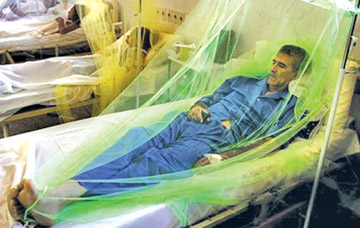
Patients recovering from dengue fever |
* Complications: Hepatic failure (failure of the liver),
Encephalopathy (damage to the brain causing fits, loss of consciousness
and confusion), Myocarditis (inflammation of heart muscles),
Disseminated intravascular coagulation (Damage to blood vessels and
blood cells causing problematic bleeding and clotting) and its one of
the many illness that can lead to death.
* Investigations: FBC - low platelets and high packed cell volume if
haemo concentrated. Usually white cell count will fall, infection may be
confirmed by isolation of virus in serum and detection of IgM and IgG
antibodies for Dengue by ELISA, monoclonal antibody or haemagglutination.
Chest X-ray may show pleural effusion. Nutritious diet and lot of
liquids, but avoid red and brown foods and drinks like coffee,
chocolate, grapes as it may misinterpret vomiting as blood stained
vomitus. Control fever with paracetamol, tepid sponging and fans.
Aspirin should be avoided. Need to seek advice from a qualified medical
practitioner if fever lasts for more than two days. Hospital management
includes intravenous fluid resuscitation with close monitoring.
Haemorrhage and shock will require fresh frozen plasma, platelets and
blood. Intensive management with inotropes of the shock syndrome may be
required in severe DHF/DSS cases.
* Prevention and Promotion: Vaccines are being researched,
anti-mosquito public health measures such as reducing breeding sites
(flower pots, fish tanks, tires, coconut shells, tins, water collecting
plants, gutters which can collect water) and good sewage management,
insecticides to destroy the larvae, mosquito nets can be used during day
time as the Aedes mosquitoes is day-biting.
* Mosquita repellents: There is a bacteria called Bacillus
thuringiensis which destroy the mosquito larvae.
Courtesy: Health
Education Bureau
Weight loss sharpens your memory
Drucilla Dyess
Losing weight not only provides a variety of health benefits, but may
also help sharpen your memory. These are the findings of new research
from Kent State University recently published in the journal Surgery for
Obesity and Related Diseases.
John Gunstad, an Assistant Professor of psychology and lead author of
the study, reported that results of the research indicate that weight
loss may improve concentration and overall cognitive ability.
He pointed out, "We've known for a long time that obesity is a risk
factor for things like Alzheimer's disease and stroke, and more recent
work really shows that obesity is a link to memory problems and
concentration problems before that even begins."
Gunstad then explained that his research team set out to answer the
question, "If excess weight causes these problems, can losing weight
help reverse them?"
For their study, the researchers analyzed the memory and attention of
a group of 150 obese people having an average weight of 300 pounds.
At the beginning of the study, each member of the group was given
mental skills testing for assessment of baseline abilities of recall and
attention.
AFP
Mother's diet during pregnancy alters baby's DNA
James Gallagher
A mother's diet during pregnancy can alter the DNA of her child and
increase the risk of obesity, according to researchers.
|

Can a baby predict the environment it will be born into? |
The study, to be published in the journal Diabetes, showed that
eating low levels of carbohydrate changed bits of DNA.
It then showed children with these changes were fatter. The British
Heart Foundation called for better nutritional and lifestyle support for
women. It is thought that a developing baby tries to predict the
environment it will be born into, taking cues from its mother and
adjusting its DNA.
Studies in animals have shown that changes in diet can alter the
function of genes - known as epigenetic change. It is a growing field
trying to understand how the environment interacts with genes. In this
study, the researchers took samples from the umbilical cord and looked
for "epigenetic markers".
They showed that mothers with early pregnancy diets low in
carbohydrates, such as sugars and starch, had children with these
markers.
They then showed a strong link between those same markers and a
child's obesity at ages six and nine. Professor Keith Godfrey, who is
from the University of Southampton and led the international study, told
the BBC: "What is surprising is that it explains a quarter of the
difference in the fatness of children six to nine years later."
The report says the effect was "considerably greater" than that of
birth weight and did not depend on how thin or fat the mother was. The
changes were noticed in the RXRA gene.
-BBC |



